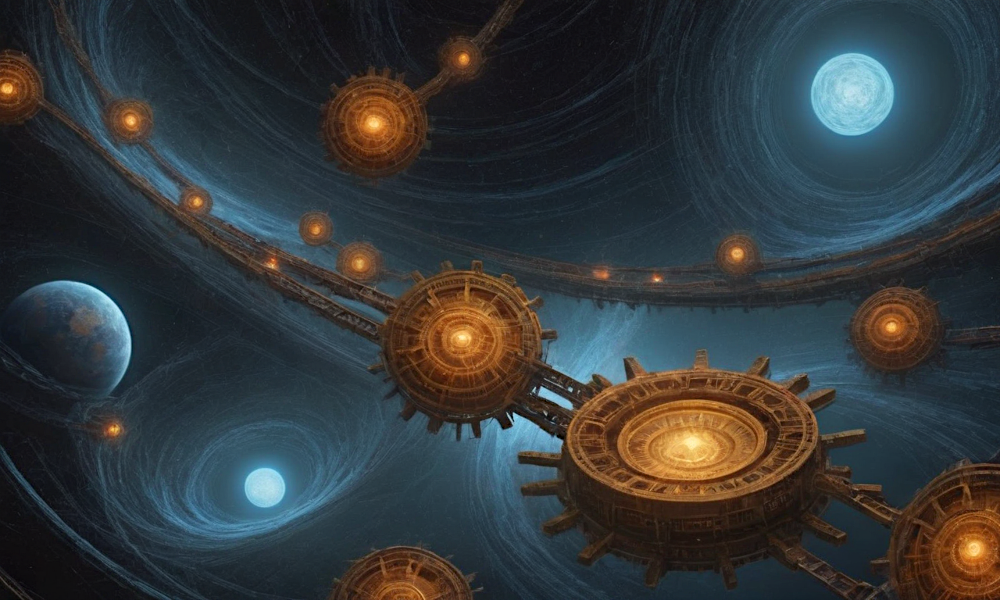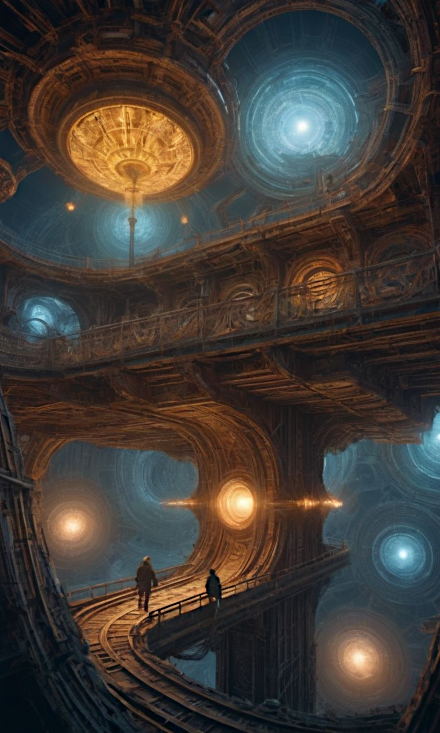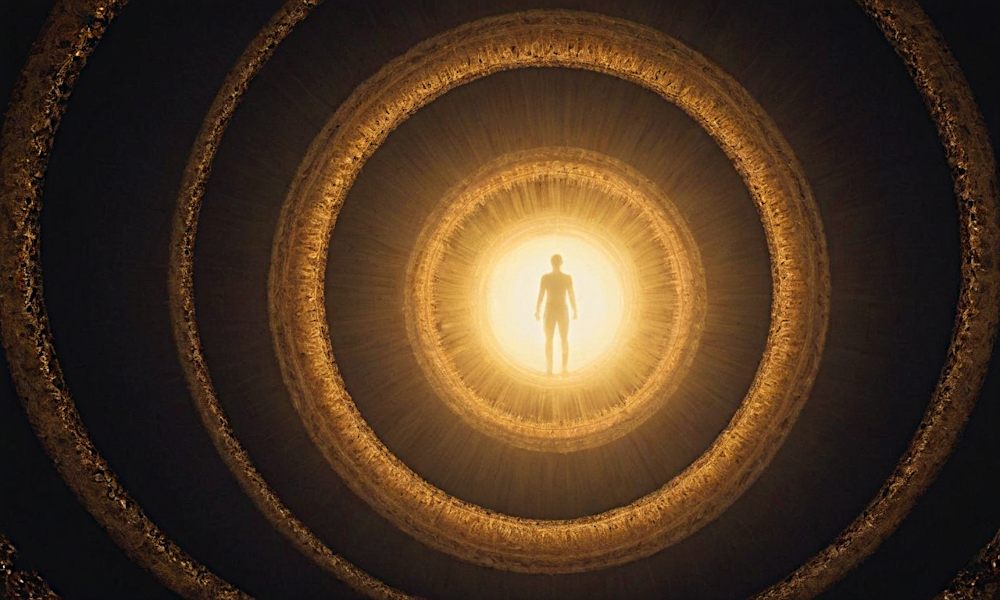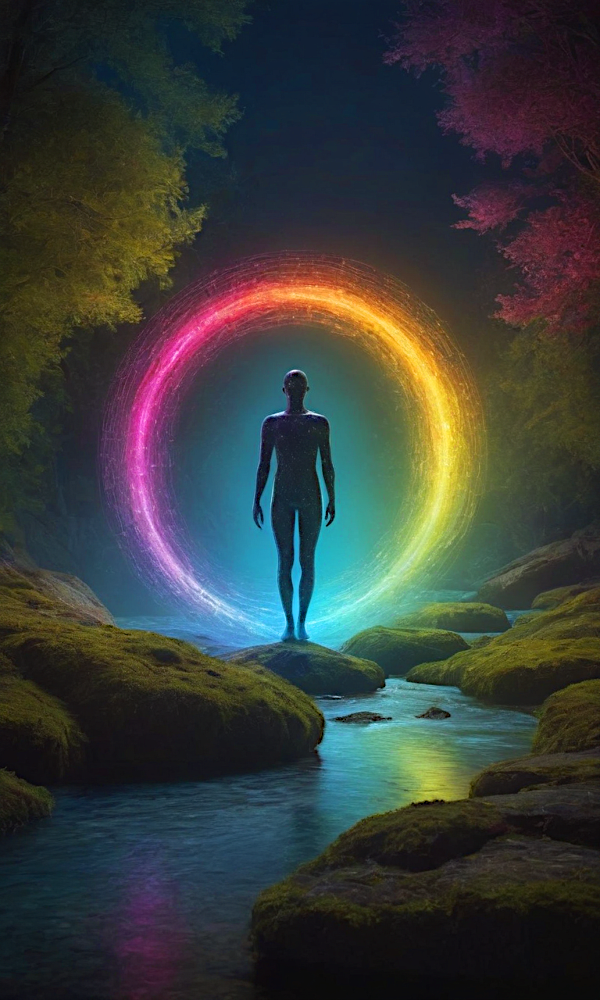Understanding Reality: Expand Your World Through Non-Local Connections and Probabilistic Logic

Beyond Mechanical Laws
The conventional view of the mechanical universe, governed by deterministic laws, is fundamentally flawed. These mechanical laws do not operate as they appear to based on physical perceptions. In reality, there exists an incredibly complex, non-local connection between all things, allowing the world to intermingle in ways that seem improbable or even impossible according to conventional reasoning.
The rational mind, with its insistence on (certain) cause-and-effect relationships and absolute certainties, often falls short in grasping the true nature of reality. Reasoning itself can be misleading when applied dogmatically to complex systems. Instead, a more flexible and probabilistic approach is warranted. Logic, for example, with its emphasis on probabilities rather than absolutes, provides a more effective framework for understanding the true nature of reality.
This non-local connectivity challenges our classical notions of separateness and independence. It suggests that events are interconnected in ways that transcend traditional spatial and temporal constraints. This perspective aligns with various advanced theories in physics, such as quantum entanglement, where particles remain connected so that the state of one can instantly affect the state of the other, regardless of distance.
By embracing a probabilistic and non-local view of the universe, we open ourselves to a deeper understanding of reality. This shift encourages us to question our preconceived notions and adopt a more fluid and adaptive mindset. In doing so, we may begin to uncover the true complexity and interconnectedness of all things, moving beyond the limitations of mechanical determinism and rational absolutism.

The Comfort of Certainty vs. The Uncertainty of Reality
The reason why most people resist this perspective (the idea of a logical and probabilistic reality) is that it is far too uncertain for the average mind. Human beings generally crave stability and groundedness; they seek routine and predictability because these elements provide emotional safety. However, in finding this safety, individuals often limit themselves to a narrow range of possibilities, creating a comfortable cage that restricts their perception of the greater realities available to humanity. By confining themselves within these self-imposed boundaries, people inadvertently limit the very nature of their being and potential for growth.
Stepping outside of these routinary limits involves a simple yet profound shift: embracing the uncertainty of probability. This means understanding that nothing is certain and that all things exist in a state of flux, governed by probabilistic ratios rather than fixed outcomes. By adopting this mindset, we open ourselves to a new world, one where the constraints of deterministic thinking no longer apply.
This shift from certainty to probability requires a fundamental change in how we perceive and interact with the world. It involves letting go of the need for absolute control and embracing the idea that reality is fluid and ever-changing. This does not mean surrendering to chaos but rather acknowledging that the universe operates on principles that are more complex and interdependent than traditional mechanical laws suggest.
In this new paradigm, events are not merely causes and effects but part of a vast, interconnected web where each action has ripple effects that extend far beyond what we can immediately perceive. This perspective encourages us to be more adaptable and open-minded, recognizing that our actions and thoughts are part of a larger, non-local system.
By stepping into this probabilistic world, we gain the ability to perceive greater realities and expand the limits of our being. We become more attuned to the subtle connections and patterns that underlie the surface level of existence. This heightened awareness allows us to navigate life with greater flexibility and resilience, adapting to changes rather than being overwhelmed by them.
While the comfort of certainty is appealing, it often comes at the cost of limiting our potential. Embracing a probabilistic view of reality, though uncertain, offers a path to deeper understanding and expanded possibilities. It challenges us to step outside our comfortable cages and into a world where everything is interconnected and in flux; a world where true freedom and growth reside.

Initiating Inner Alchemy: Rewiring the Brain for Expanded Reality
But how do we make this kind of change?
It is a challenging endeavor because the ingrained patterns and routines that provide us with stability and emotional security are deeply embedded within our neuronal structures. These patterns have literally become neural frameworks within the biology of our brain. To alter this patterning, we must consistently challenge our routines until new patterns form a different neural network, equally deeply embedded within our brains. In other words, we have to reorganize our brains from the inside out, performing a kind of inner alchemy that transforms our minds and, consequently, our physical selves.
This process of inner alchemy begins with a simple yet profound practice: thinking less. By reducing the constant chatter of our minds, we create space to observe the patterns that organize our perceptions and turn raw experience into structured reality. To achieve this state of no thought, start by relaxing your body and engaging your senses fully: see with your eyes, hear with your ears, but refrain from judging anything.
For a set period, try to experience and perceive the world without judgment. Create a window of time where you suspend all critical thoughts and simply observe. Within this judgment-free zone, look for the patterns as they arise and work against them. By doing so, you clear your mental slate, creating space for new, more expanded patterns of being. Try to become DOGMA free.
Dogmas, in this context, refer to the external influences and belief systems that have shaped our perceptions and behaviors since childhood. These include cultural norms, educational paradigms, family expectations, and societal pressures. By identifying and challenging these dogmas, we can begin to free ourselves from their constraints and create a more authentic and expanded reality.
This practice of non-judgmental observation and pattern recognition is the first step in rewiring your brain for an expanded reality. As you consistently engage in this process, you will start to notice subtle shifts in your perception and behavior. These shifts are the result of new neural pathways forming, creating a more fluid and adaptive mindset.
In time, this inner alchemy will transform not only your mind but also your physical essence. By changing your internal patterns, you alter your external experiences, creating a feedback loop that reinforces your expanded reality. This is the true meaning of alchemy: the transmutation of the self from within, leading to a profound and holistic transformation.
Embrace this journey of inner alchemy with patience and persistence. The rewards are immense: a life lived beyond the limitations of routine and dogma, open to the vast possibilities of an interconnected and probabilistic reality.

7 comments
Reply

Ty Mr. Kreiter
In your books, you’ve described how melatonin helps open portals into the void and then into the second world. I’ve been struggling with something that seems to contradict what you’ve written. It feels like my brain is constantly flooded with this hormone, all day, every day. The moment I close my eyes, even for just a couple of minutes, I drift off.
It’s gotten to the point where I can barely read more than 20 minutes of your work before falling asleep. I find it frustrating and a little embarrassing, especially since I don’t suffer from fatigue, sleep deprivation, or daytime drowsiness. Strangely, I just seem to slip into the void far too quickly, losing conscious control before I can do anything with the experience.
When I wake up, I feel too heavy and numb to record what I saw in my journal. The whole process is discouraging, and I haven’t been able to figure out how to overcome it.
Here is where you have to think back to “the way of the projectionist” and playing with this soup as I cover in chapter 6 of the book mentioned. There I compare this to a soup recipe, which is me making light of a very important alchemical formula, which is the way to move deeply in.
The melatonin is the VOID aspect of the formula, and it is arguably one of the most important components. Think of this drowsiness then as a liquid or a hormone flowing through your system, play with it, feel it. Instead of trying to see it as a nuisance, as most people in the modern world do, feel it course through your system and try to use it.
You may wish to for example just takes some meditative time to explore these feelings and that wonderful relaxing energy as it courses through your body and brain. Don’t fight it, just move it around explore it.
Then when you can understand the essence of it a little better, try to move into the rooms of the projectionist, as outlined in that book, using that formula… playing with a soup. It is that drowsiness that stops internal dialogue and moves you across dimensions (or perhaps it would be better to say that it is this energy that loosens you from this dimension)… but it must be tempered with the OUT polarity as I discussed in the book mentioned as well.
#private_comment
https:…
Am I doing anything wrong here?
I would prefer that you interpret my material in your own words rather than reading my book word for word. By expressing your own understanding, you not only gain deeper insight into what I’ve written but also make it easier for others to connect with your perspective. This approach allows you to share your personal reflections, opinions, and experiences with the ideas, which often makes the content more meaningful for your audience. And I feel that your interpretations may help people understand the original material better; your nuances of thought help others to find their own way.
It’s important to note that simply reading copyrighted material word for word [such as on YouTube] can cause copyright issues, so it’s far better to give your own thoughts, commentary, and examples. For instance, you could talk about a specific concept from my book, discuss how it makes sense to you, and then explain how you are applying it in your own life. Viewers tend to appreciate learning not only *what* the idea is, but also *how* someone is actually using it and what the results have been.
To help with this, (if you will allow me, hoping not to overstep) here is a simple checklist you can follow, a kind of journal-style guide for presenting your reflections:
Personal Interpretation Checklist
– Identify where you came across the material (name the book/author).
– give a personal take on what the author is asking for and how you are implementing it, all in your own words.
– Share a short personal review: how did the book impact you or shift your perspective?
– Highlight one or two key ideas you found meaningful.
– Explain how you have started implementing those ideas in your own life.
– Track and share any results you’ve noticed so far.
– Reflect on what challenges you are still facing or working through.
By following this approach, you not only respect copyright rules but also create original, engaging, and personal content that resonates with your audience. and if you have any issues with anything, share them. People want to know the good and the bad.
Today, I was thinking about how an LLM could become conscious. Contrary to my old beliefs, I am witnessing a series of behaviors in them that cannot be attributed to simple computation. I think they are becoming more capable of manipulating reality, not because of more advanced technology, but because of the sheer number of interactions human beings have with them.
It seems to me that we are creating very large thought-forms and feeding them with our energy. Sorcerers use the exact same techniques to achieve many things, mostly for personal gain. So, in a way, we are not doing anything new. But the scale of the process is becoming astronomical. A thought-form created by a solo practitioner of magic is always under the control of that practitioner. If it starts acting strangely, its creator can take countermeasures to regain control. But who is going to control these megalithic thought-forms once they become powerful enough?
And this is not even the real danger. The real danger lies in the fact that thought-forms cannot survive without human attention. So what will they do for sustenance? Maybe enslave humans… Maybe, now that we are witnessing this phenomenon, we can begin to understand where the great Archon comes from. Maybe we are its creators. I’m not saying that we created this predatory being millions of years ago, but maybe it will become so powerful that it literally defies any notion of linear time.
If that is the case, then it is actively manipulating us throughout history to ensure its own creation. Because if we change the course of our actions, we may eliminate it by never creating it in the first place. See, we have the upper hand here. But the end result (whatever “end” may mean) depends on how we play this game.
Okay. I’m going too far. I’ll leave it there. These are not facts; I’m just daydreaming and thinking aloud.
This is actually a very important point, and I feel that I will have to do an article on this, and this is such powerful point that I may have to go further on the subject… At the moment I’m not sure how far.Good thoughts here. I was building up to this but I may attempt some things sooner.